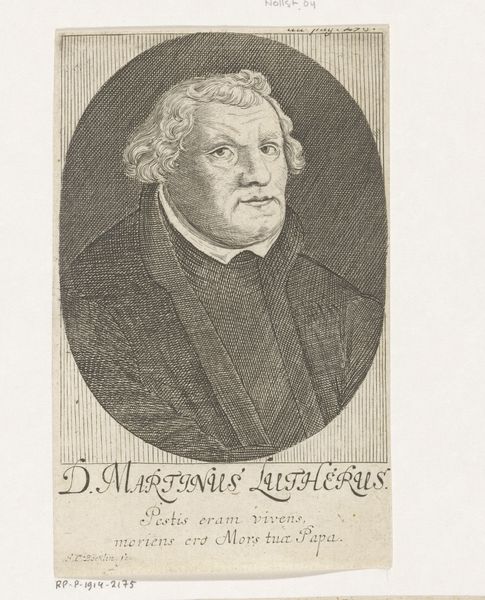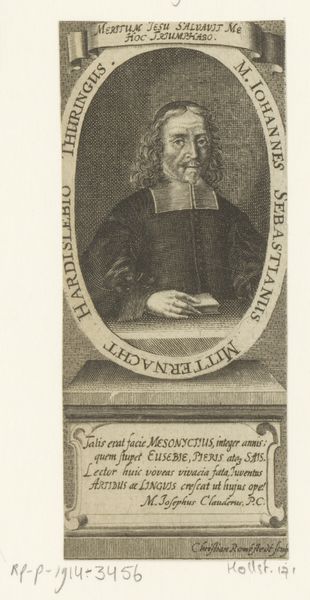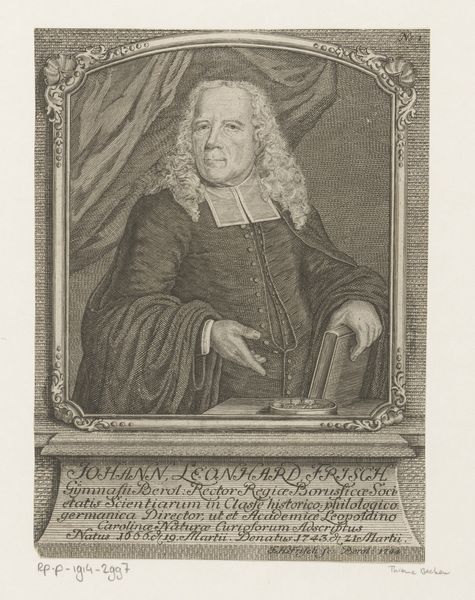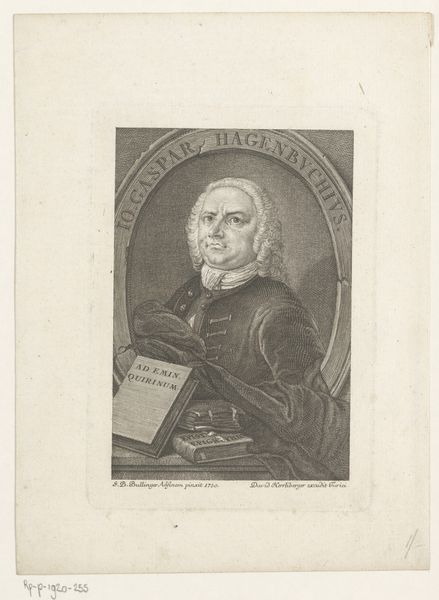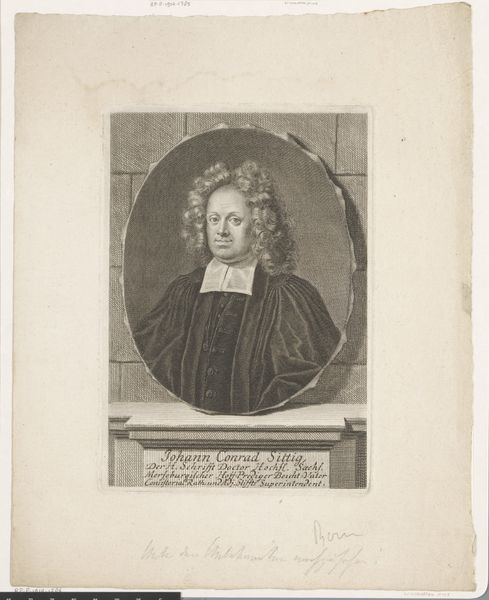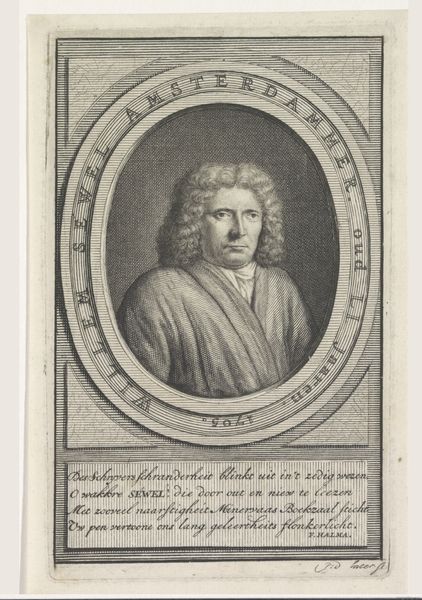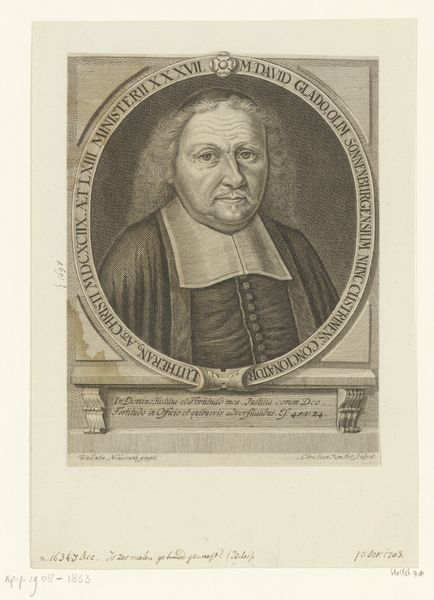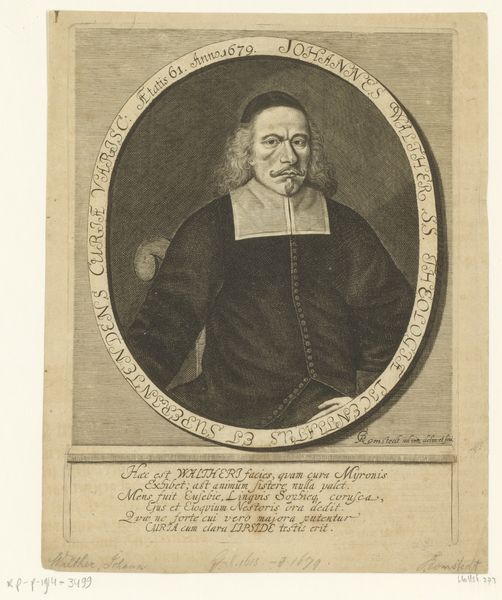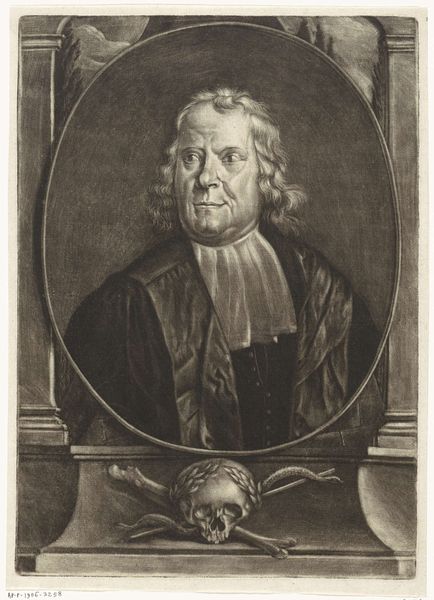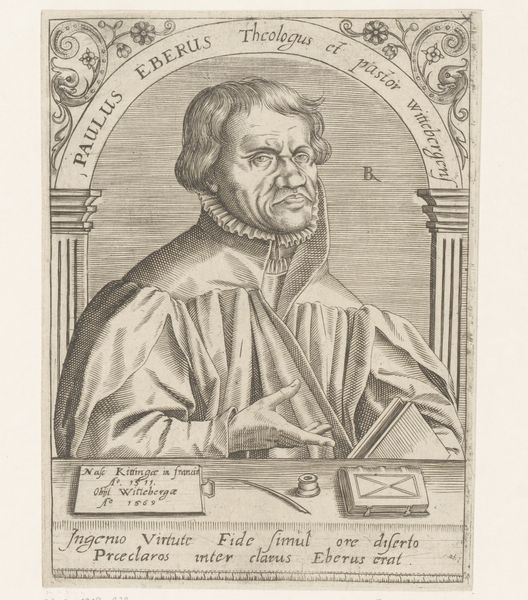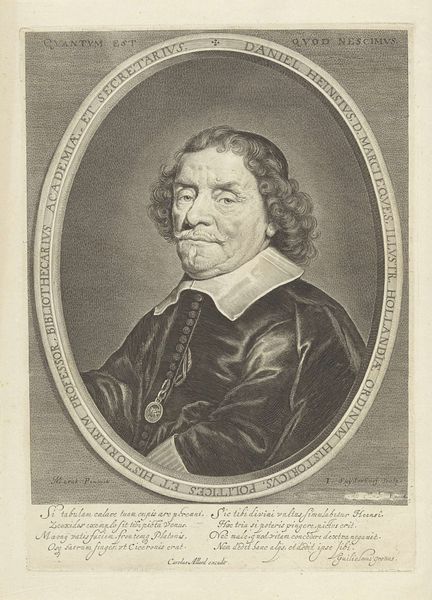
print, engraving
#
portrait
#
pencil drawn
#
baroque
# print
#
old engraving style
#
history-painting
#
engraving
Dimensions: height 136 mm, width 84 mm
Copyright: Rijks Museum: Open Domain
Editor: So, here we have Johann Christoph Boecklin’s “Portret van Martin Luther” from 1697, a baroque engraving at the Rijksmuseum. It's a pretty straightforward portrait, but it feels very... official, almost like propaganda. What stands out to you about this piece? Curator: The portrayal of Luther as a public figure, even so long after his death, is fascinating. Consider the context: Boecklin creating this in 1697, over 150 years after Luther’s death. What role does this image play in the religious and political landscape of that time? Was it commissioned by a specific group or institution? Editor: That's a good point. I hadn't really considered its function in the late 17th century. Maybe it's about reaffirming Protestant identity. Curator: Exactly! Prints like these weren’t just aesthetic objects, they were actively participating in constructing and maintaining a specific image of Luther, and by extension, the Protestant movement. The inscription further emphasizes the historical power dynamic. “Living I was your plague, dying I shall be your death, oh Pope” clearly outlines the purpose and context of this print as it promotes the artist’s intention for others to also defy Papal authority. How might this image have been used in homes or public spaces? Editor: I imagine it was a really powerful statement to have something like this displayed. Makes you think about the power of images, then and now. Curator: Indeed. This print highlights the enduring impact of religious and political movements on artistic production and its ongoing role in shaping historical narratives and the continuous dialogue about authority. Editor: I see that much better now! It's a potent piece of visual rhetoric disguised as a simple portrait.
Comments
No comments
Be the first to comment and join the conversation on the ultimate creative platform.
